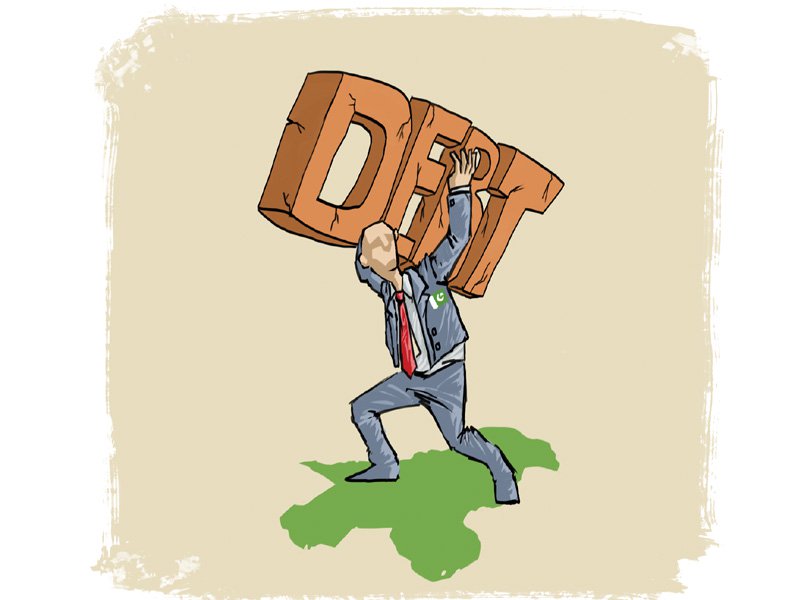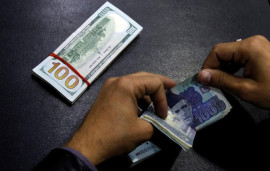
However, Islamabad can reduce the accumulation of public debt by 4% of gross domestic product (GDP) by improving fiscal transparency, adopting a credible medium-term fiscal framework and public financing management system, according to the 2019 Regional Economic Outlook for Middle East and Central Asia that the IMF made public on Monday.
Interestingly, the IMF has not fully adopted the transparency policy and withheld information about absolute size of Pakistan’s economy and the current account deficit in dollar terms.
Unlike all other regional peers, the IMF has only given the size of Pakistan’s economy at $314.6 billion for fiscal year 2017-18. It has given the sizes of other regional economies for fiscal year 2019 and 2020.
Islamabad is part of the sub-region of Middle East, North Africa, Afghanistan and Pakistan known as the MENAP region. The report was released on the day Pakistan and the IMF formally started talks for the review of Pakistan’s economy for the July-September period of current fiscal year.
“This vicious cycle of low growth and rising debt has limited space for growth-enhancing capital investments. As a result, many countries have found it difficult to reduce debt levels, even those tightening their fiscal stance (Egypt, Morocco, Pakistan, Tunisia),” according to the report.
The IMF has once again projected Pakistan’s economic growth rate at 2.4% of GDP and debt-to-GDP ratio at 78.6% of the total national output, which is consistent with all the previous IMF publications.
It stated that improving fiscal transparency, adopting credible medium-term fiscal frameworks and strengthening public finance management systems could help reduce the pace of public debt accumulation, helping MENAP oil importers to contain large debt.
“Egypt, Lebanon and Pakistan, which have rising debt burdens, could slow public debt build-up by about 4% of GDP.”
The IMF has projected Pakistan’s external debt will grow from 38.1% of GDP to 43.7% of GDP by the end of current fiscal year, largely because of higher debt repayments, current account deficit financing and building reserves by taking loans.
The last Pakistan Muslim League-Nawaz (PML-N) government had also built reserves by taking foreign loans, which was not a sustainable way and resulted in signing of an IMF programme.
The IMF report has projected that Pakistan’s gross official foreign currency reserves will increase from $6.8 billion to $11.1 billion by the end of current fiscal year. Any increase in reserves will be a direct result of borrowing as the Pakistan Tehreek-e-Insaf (PTI) government has also failed to boost exports.
A recent briefing by the finance ministry to a parliamentary panel also showed that Pakistan would not be able to achieve all of its debt reduction strategy targets due to high debt levels and exchange rate depreciation.
Having built over many years, the cost of public debt burden has become sizeable, preventing investments critical to the region’s long-term economic future. For several governments in the region, Pakistan and Egypt, the immediate budgetary pressure is acute; gross financing needs - which account for the impact of debt maturity - are particularly high at several multiples of public revenues, said the IMF.
As a result, many governments are vulnerable to sudden changes in market sentiment. High debt levels are also coincident with low FDI, consistent with public debt crowding out productive private investment, it added.
In many countries (Egypt, Lebanon and Pakistan), the largest component of short-term budgetary pressure is mounting interest payments, stated the IMF.
In the Middle East and Central Asia region, the inflationary pressures have been largely kept at bay by weak domestic and external demand. But situation in four countries - Egypt, Pakistan, Sudan and Tunisia - was different that saw high inflation due to currency devaluation.
“Pakistan….are notable exceptions where, at different times in the last three years, exchange rate depreciations, while helping reduce external imbalances, have contributed to increased inflation,” said the report.
The IMF also said in Pakistan tighter monetary policy was required to stem ongoing reserve losses, at the expense of higher interest payments.
Overall, the real GDP growth in MENAP oil importers is expected to fall slightly in 2019 to 3.6%, down from 4.3% in 2018, driven mostly by Pakistan and Sudan, according to the IMF. Excluding these two countries, the rest of the region’s real GDP growth in 2019 is projected to be 4.4%, it added.
In 2020, the real GDP growth in the region is expected to remain at about 3.7% but recover to 5% over the medium term. This is largely driven by Pakistan, where ongoing reforms are expected to boost growth. However, this outlook implies that the region is set to fall behind other countries with similar income levels.
Published in The Express Tribune, October 29th, 2019.
Like Business on Facebook, follow @TribuneBiz on Twitter to stay informed and join in the conversation.





































1713853507-0/MalalaHilary-(2)1713853507-0-270x192.webp)







COMMENTS
Comments are moderated and generally will be posted if they are on-topic and not abusive.
For more information, please see our Comments FAQ